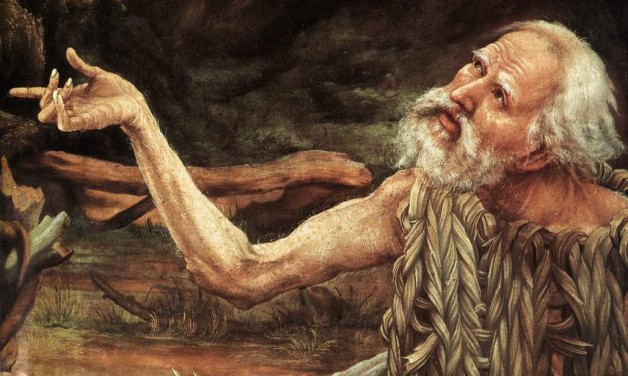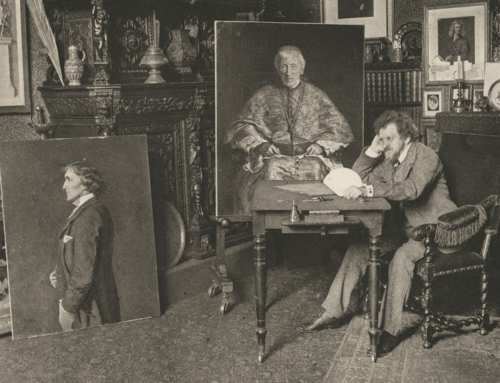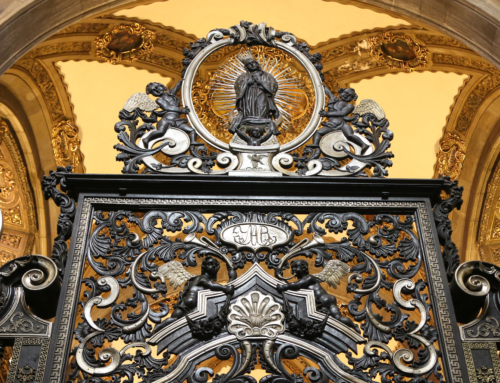Bl. Jordan of Saxony, the successor of St. Dominic, in his Libellus on the Beginnings of the Order of Preachers singles out the Conferences of John Cassian as a book loved by St. Dominic and critical for developing his spiritual life. There is also a tradition in the Order that throughout his life St. Dominic carried around three books with him: St. Matthew’s Gospel, the Epistles of St. Paul, and the Conferences. This latter spiritual masterpiece, also a major source for the Rule of St. Benedict and thus influencing most of Western monasticism, remains relevant for us today.
John Cassian was born around 360 A.D. in modern-day Romania, and he joined a monastery in Bethlehem. He traveled with his friend Germanus to the monasteries in Egypt on at least two different occasions and was ordained by St. John Chrysostom. Cassian eventually travelled to Rome where he was asked to open a monastery based on the Egyptian model near Montpellier in modern-day France. His two major works – the Institutes and the Conferences – were designed to assist the monastery and others like it. His feast day is celebrated on July 23.
The Institutes is a short work of twelve chapters and can be ideal for a short retreat. It first presents the monastic routine and clothing, before moving on to a systematic discussion of eight vices. Cassian obtains the eight vices from Evagrius Ponticus, a monk of the 4th century, whose list would be slightly modified in subsequent ages to become the seven deadly sins. Cassian first attacks the vices of gluttony and fornication. Only after the body is trained is it able to counter the more spiritual vices like avarice, acedia, and pride. One should not gloss too quickly over the first chapters, however, as the manner in which a person lives and acts greatly impacts on their ability to live a virtuous life.
The Conferences is a much longer work, containing twenty-four extended dialogues between Cassian, Germanus, and the desert fathers of Egypt. These conversations deal primarily with the interior struggle of a person coming closer to God. Less systematic than the Institutes, the Conferences explore the interrelation of virtues and vices within our lives. The conference on friendship deals with the vice of anger, while the conference on the different types of monks discusses the virtues of patience and humility at great length. Furthermore, the desert fathers regularly emphasize that as one grows in the spiritual life, hospitality and charity always trump the ascetical discipline. Cassian’s works do not stand solely on their own authority, but like all the sayings of the desert fathers whom he studied, they are infused with Scripture.
The spirituality of Cassian is a path of renunciation that is infinitely austere, as Fr. Guy Bedouelle, O.P., emphasizes in his book St. Dominic: The Grace of the Word. The following of Jesus Christ means emptying oneself, renouncing more and more of what we have been so that God can fill us more and more with Himself. Cassian stresses complete reliance on God, and one example of this is the regular praying of the verse “O God, come to my assistance; O Lord, make haste to help me,” which St. Benedict integrated into the praying of the psalms. Today, we pray this verse at the start of each office in the Liturgy of the Hours.
Bl. Jordan tells us that by using the Conferences, St. Dominic “strove to explore the ways of salvation and to follow them with all the power of his mind.” The end result, as we see in St. Dominic, is one of great joy and overflowing charity, weeping for sinners, praying for the salvation of their souls. It is not an easy or a simple path, but St. Dominic prepared for his great preaching mission to the world by more than a decade of silent prayer and growth in the spiritual life. It is the life of steady virtue that preaches loudest, emphasizing the reality of the great hope and joy of the words which we proclaim: Jesus Christ is risen, truly He is risen!
St. John Cassian, pray for us.
✠
Image: Matthias Grünewald, St. Anthony Visiting St. Paul the Hermit in the Desert (detail)







